INSIGHTS
WHAT IS ACTIVATED CARBON
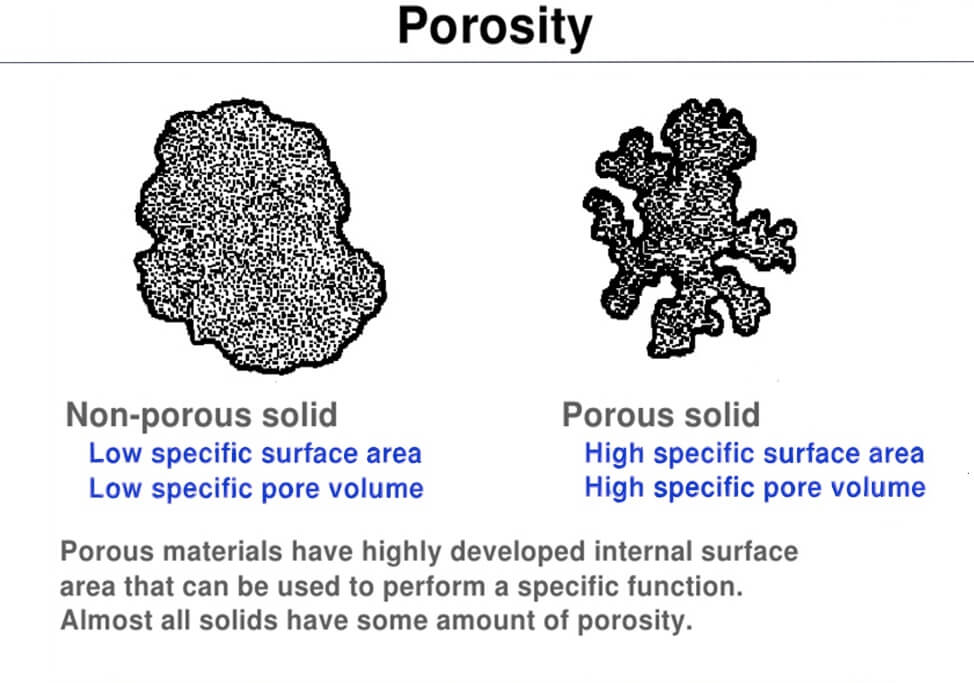
Activated Carbon can be defined as highly porous, carbonaceous material. The very large porosity provides a large surface area (sponge like molecular structure), which results in exceptional adsorptive properties.
During adsorption, the impurities contained in a liquid or gas are attracted and bound to the surface of the particles of the Activated Carbon as the liquid or gas is filtered through.
Basically, the porosity is only a means, to provide the adsorptive properties that make Activated Carbon of practical use. In the industry, carbons are therefore characterized by adsorptive properties rather than pore structures. The activation process develops pores of molecular dimensions within the carbon particle. Vast numbers of these pores in each particle give the carbon extremely high internal porosity and surface area. Typically, Activated Carbon contains surface areas in the range of 500-2000 m2/g. A handful of Activated Carbon can contain a surface area of 15 Acres.
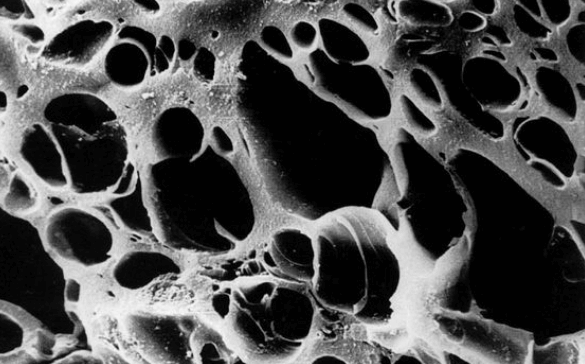
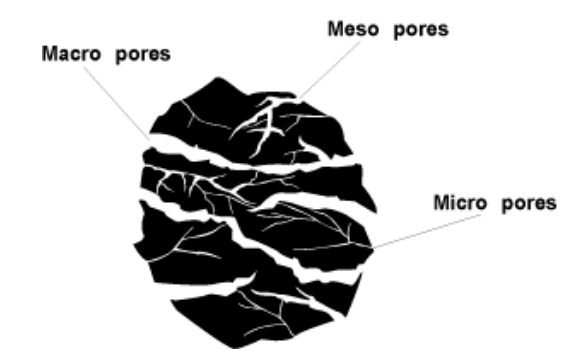
- Macro pores (above 50 nm diameter)
- Mesopores (2-50 nm diameter)
- Micro pores (under 2 nm diameter)
Micro pores generally contribute to the major part of the internal surface area. Macropores and Mesopores can generally be regarded as the highways into the carbon particle, and are crucial for the kinetics. Macro pores can be visualized using SEM (Scanning Electron Microscopy). The pore size distribution is highly important for practical application. The best fit depends on the compounds of interest, the matrix (gas, liquid) and treatment conditions. The desired pore structure of an Activated Carbon product is achieved by combining the right raw material and activation conditions.
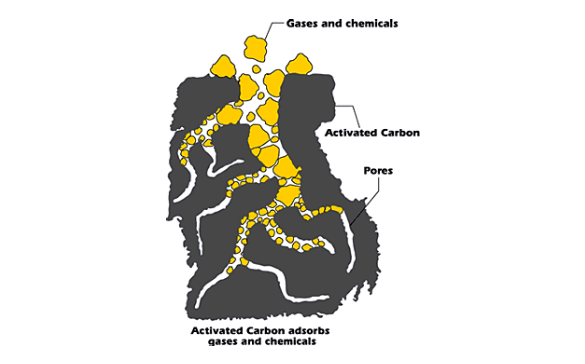
WORKING PHENOMENON OF
ACTIVATED CARBON
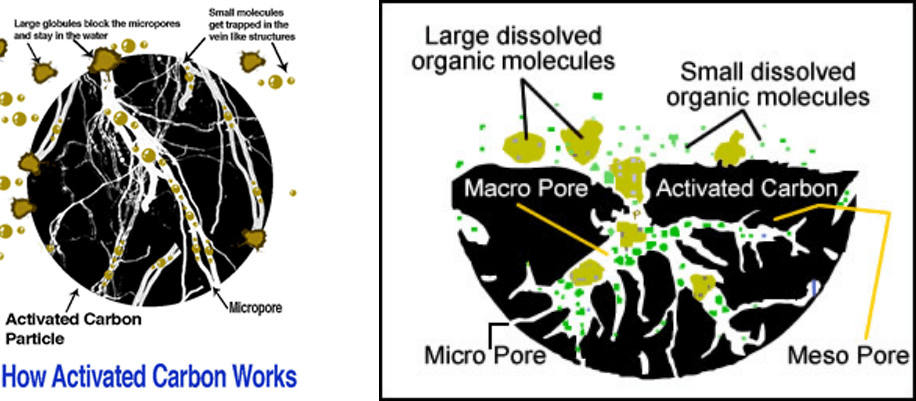
The basic mechanism through which Activated Carbon removes impurities from gases or liquids is referred to as physical adsorption. Physical adsorption is a phenomenon resulting from electrostatic forces of attraction (Van der Waals Forces) between the impurities and the internal surfaces of the Activated Carbon.
Activated Carbon serves the purpose of removing undesirable colorations and odors and also other impurities. The main fields of employment are: the treatment of salt solutions, inorganic materials and organic liquids in the chemical and pharmaceutical industries, clarifying drinks and bleaching oils and fats in the food industry. Other types of Activated Carbon are available for the treatment of drinking water and sewage water.
In its numerous applications, Activated Carbon represents a number of different functionalities:
| Adsorption | The most well-known mechanism, through physical absorption (Van der walls Forces) of Chemisorption. |
| Reduction | For example, removal of chlorine from water is based on chemical reduction reactions |
| Catalysis | Activated Carbon can catalyze a number of chemical conversions, or can be a carrier off catalytic agents (e.g., precious metals). |
| Carrier of Biomass | Support material in biological filters. |
| Carrier of Chemicals | For example, slow-release applications colorant. Activated Carbon’s function |
Get In Touch
Complete control over products allows us to ensure our customers receive the best quality prices and service.
Quality & Quantity On Time Every Time !

